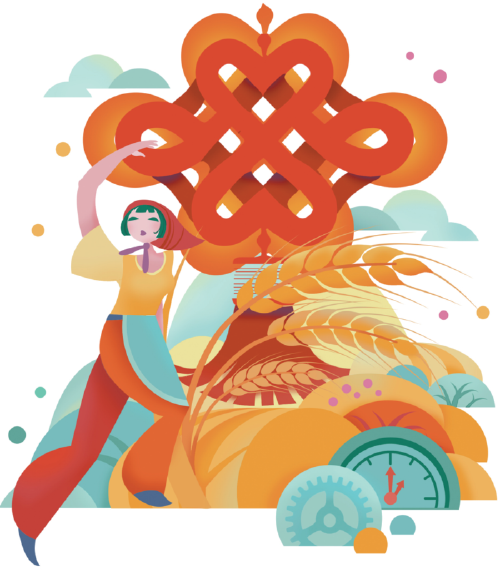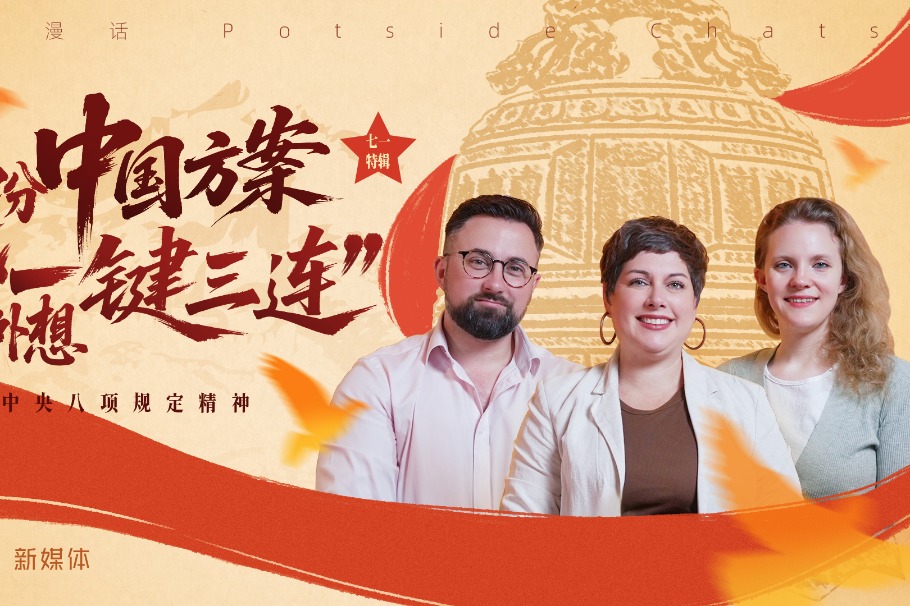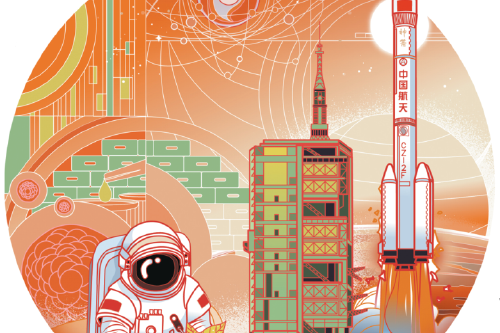Rebuilding agriculture


Making China an agriculturally strong country is essential for its modernization
This year's Central Rural Work Conference stressed that a strong agricultural sector is the foundation of a strong and modern country, and agricultural development is indispensable to meeting people's needs for a better life, achieving high-quality development and solidifying the foundation of national security. Building an agriculturally strong country should be based on not only domestic, but also international development experience and universal lessons. Analyzing the basic features of agriculturally strong countries and identifying the gaps between China and these countries will help to develop pathways for China to become an agriculturally strong country.
China's agricultural development has made remarkable achievements and the agricultural economy has seen rapid growth for more than 60 years, The capacity for ensuring the country's food supply has improved significantly. Food and Agriculture Organization data shows that China's total agricultural output value accounted for 22.5 percent of the global total, ranking first in the world in 2018.However, China's agricultural development still faces many challenges.
First, China's agricultural labor employment share is still high and labor productivity far lower than that of the world's agricultural powers. In 2021, the number of employed agriculture laborers in China was 170 million, accounting for 23 percent of total labor employment, with agricultural added value of 50,000 yuan ($7,248) per worker. In terms of international comparison, the agricultural added value per worker in China was $5,609 in 2019 (at 2015 constant US$), equivalent to only 5.6 percent of the United States, 5 percent of Canada and 22 percent of the European Union.
Second, China has made remarkable progress in agricultural science and technology, but there are still significant gaps. The contribution rate of China's agricultural S&T progress in agricultural growth was only 61 percent in 2021, compared to more than 80 percent in the OECD countries. In terms of investment in agricultural research, the agricultural research intensity (the ratio of spending on agricultural research to agricultural GDP) is less than 1 percent, much lower than that of the US and Europe at about 2-3 percent. Private investment in agricultural research is seriously insufficient. In developed countries, private sector investment in agricultural research is dominant. As a result, China relies on imports for some key seed provenances and agricultural machinery and equipment.
Third, an agricultural development model with high input and high output faces the challenge of sustainability. China has attached great importance to the green and high-quality development in recent years. The intensity of fertilizer and pesticide application in China has decreased, but is still higher than the international level. In 2019, the fertilizer used per hectare in China was 198 kilograms, much higher than that of the US at 72 kg/ha and Canada at 66 kg/ha.
Fourth, the degree of integration of agricultural supply chains is still low. According to national statistics, in 2021, the contribution of agriculture and related industries to total GDP was 16.05 percent, only 2.1 times of the added value of agriculture in China, which was far lower than the agriculturally strong countries, such as the US, where the added value of agriculture, food and related industries is more than eight times the added value of agriculture.
Finally, while Chinese transnational agribusinesses continue to develop and grow, they are relatively small in number and scale. The scale of China's transnational agricultural companies is smaller, and there are large gaps in terms of agricultural trade, control of the supply chain and core technologies. The global top 170 leading transnational agribusiness companies are mainly located in developed countries in Europe and the US, with 64 in Europe and 61 in North America, of which 56 are headquartered in the US. In 2022, COFCO International's revenue was $48 billion, while Cargill of the US recorded a revenue of $165 billion.
To transform China into an agriculturally strong country, it is critical to draw on international experience, and adapt to local conditions with Chinese characteristics.
First, the support of agricultural S&T should be enhanced to solidify the foundation of food security in all aspects. A diversified agricultural research and development system, or R&D, and extension system should be built, and multiple measures should be taken to encourage the private sector to invest in agricultural R&D to enhance the innovation of agricultural technology and strengthen the transformation and application of agricultural S&T.The country should also improve land productivity and labor productivity through farmland management and the application of modern technologies.
Second, agricultural support policies should be reformed to achieve the multiple goals including productivity improvement, nutrition enhancement, and environmental sustainability. Financial support for nutritious, healthy and sustainable food should be increased, especially for climate adaptation, green agricultural R&D and extension. Guided by the "Big Food "approach, it is important to build a diversified food supply system, exploring new food sources, and promoting the development of a nutrition-oriented food sector and a health-oriented food consumption pattern.
Third, the agriculture supply chain should be extended to improve farmers' incomes. The construction of infrastructure for the agricultural product supply chain should be strengthened, including the construction of e-commerce and a modern agricultural circulation system, and upgrading of agricultural supply chain to enhance the system's resilience, and improve farmers' income.
Fourth, the development of transnational agricultural companies should be hastened and their international influence enhanced. Agricultural trade should be optimized and agricultural imports should be diversified to reduce the trade risks and shocks. The country also should strengthen its bilateral cooperation with developing regions and countries along the Belt and Road routes through South-South cooperation and technology transfer to improve food security in these countries as well as in China.
Fan Shenggen is the dean of the Academy of Global Food Economics and Policy and chair professor at China Agricultural University. Zhang Yumei is a professor of the Academy of Global Food Economics and Policy at China Agricultural University. The authors contributed this article to China Watch, a think tank powered by China Daily.
Contact the editor at editor@chinawatch.cn.

































